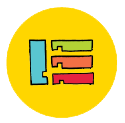The Creative Computing Curriculum, designed by the Creative Computing Lab at the Harvard Graduate School of Education, is a collection of ideas, strategies, and activities for an introductory creative computing experience using the Scratch programming language. The activities are designed to support familiarity and increasing fluency with computational creativity and computational thinking. The most recent edition of the curriculum is aligned with Scratch 3.0 and is now available in Google Slides as individual units, activities, or the full curriculum.


